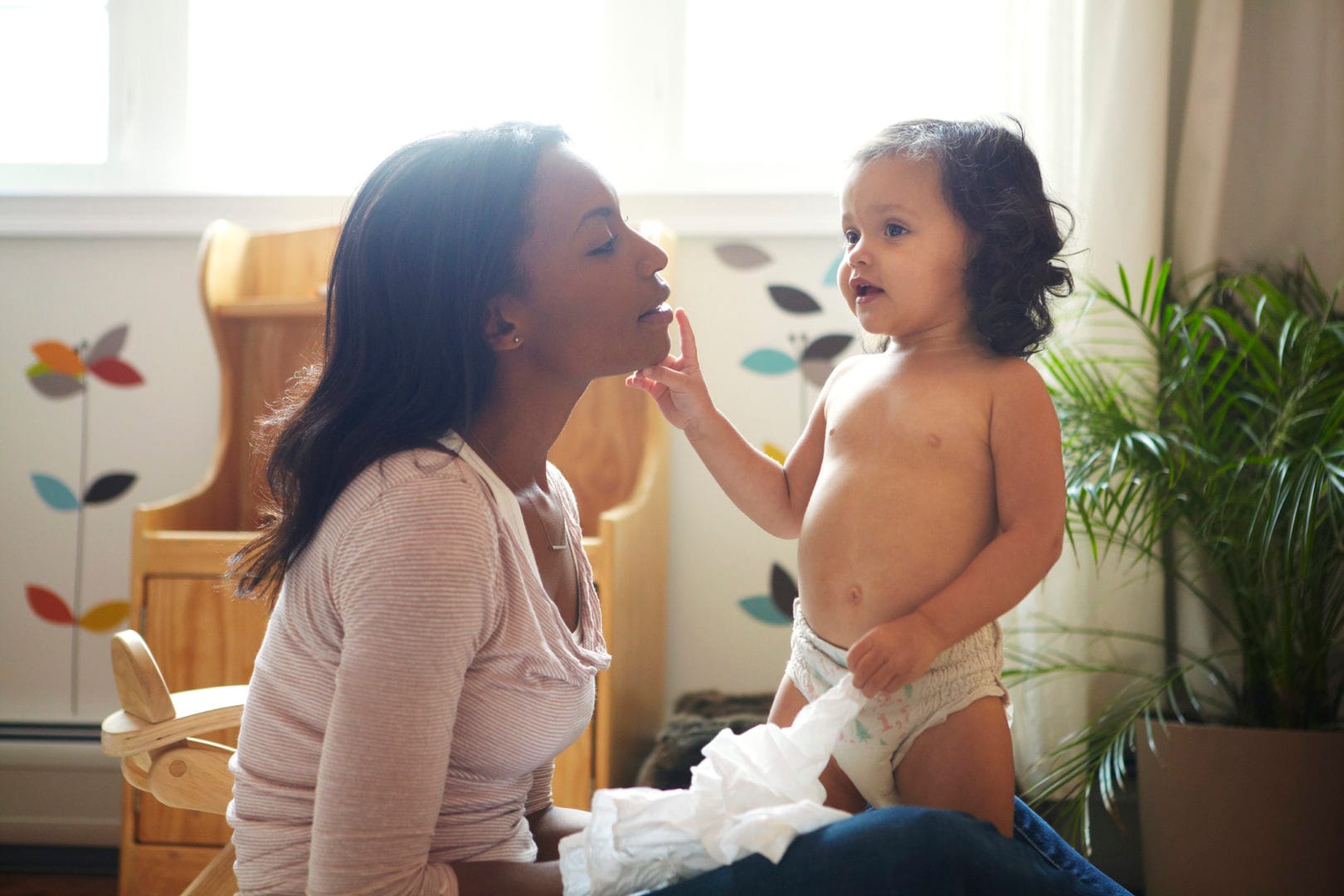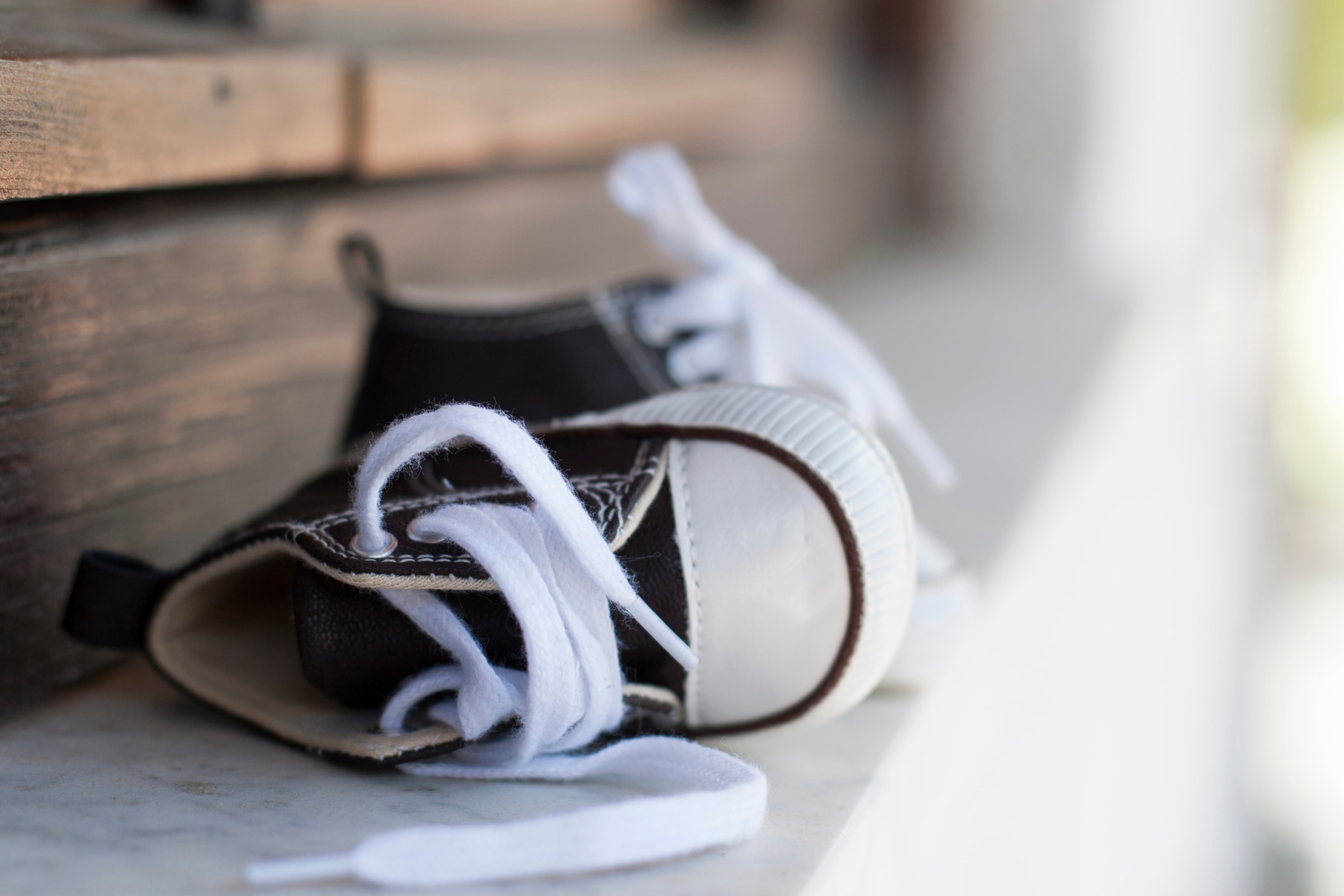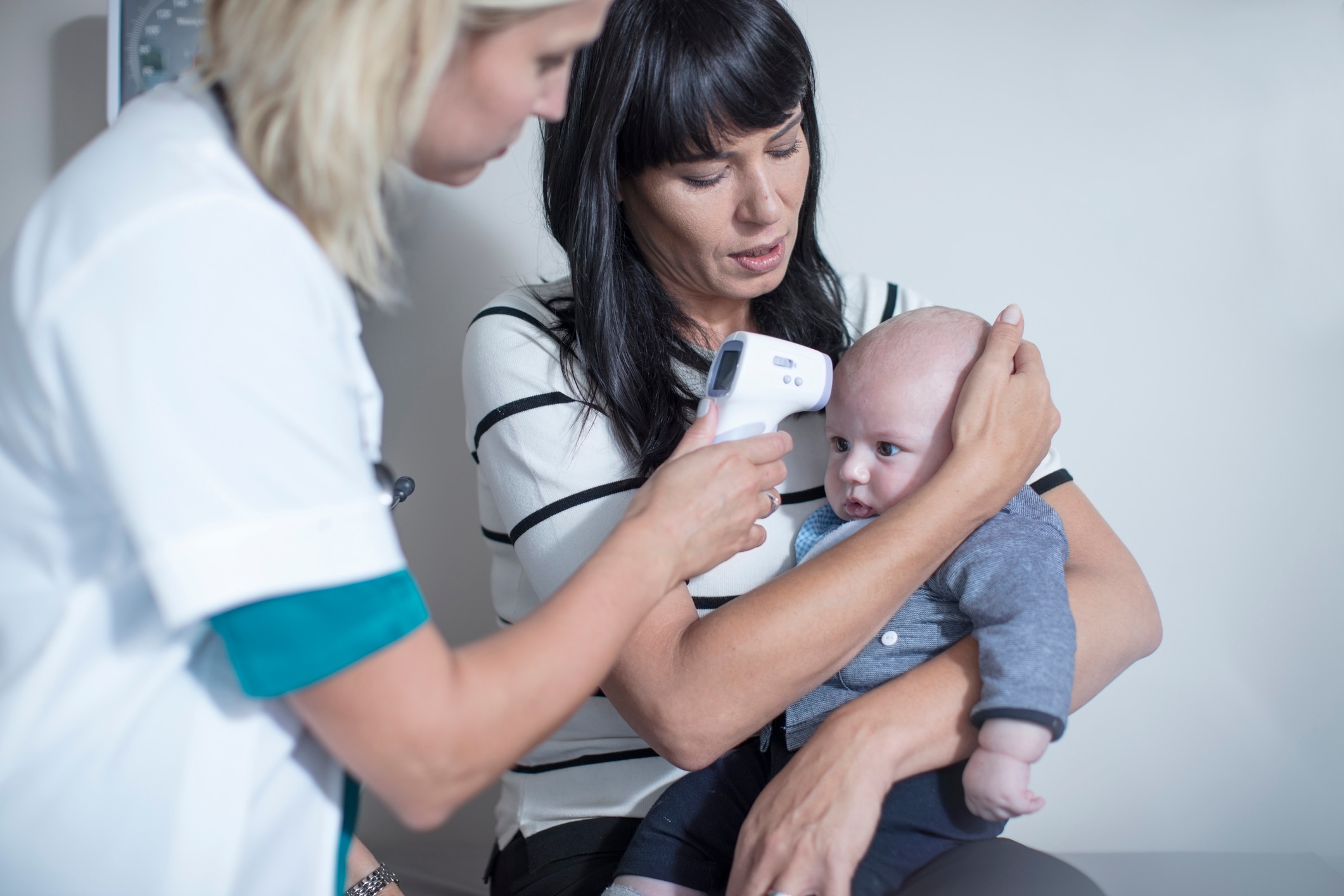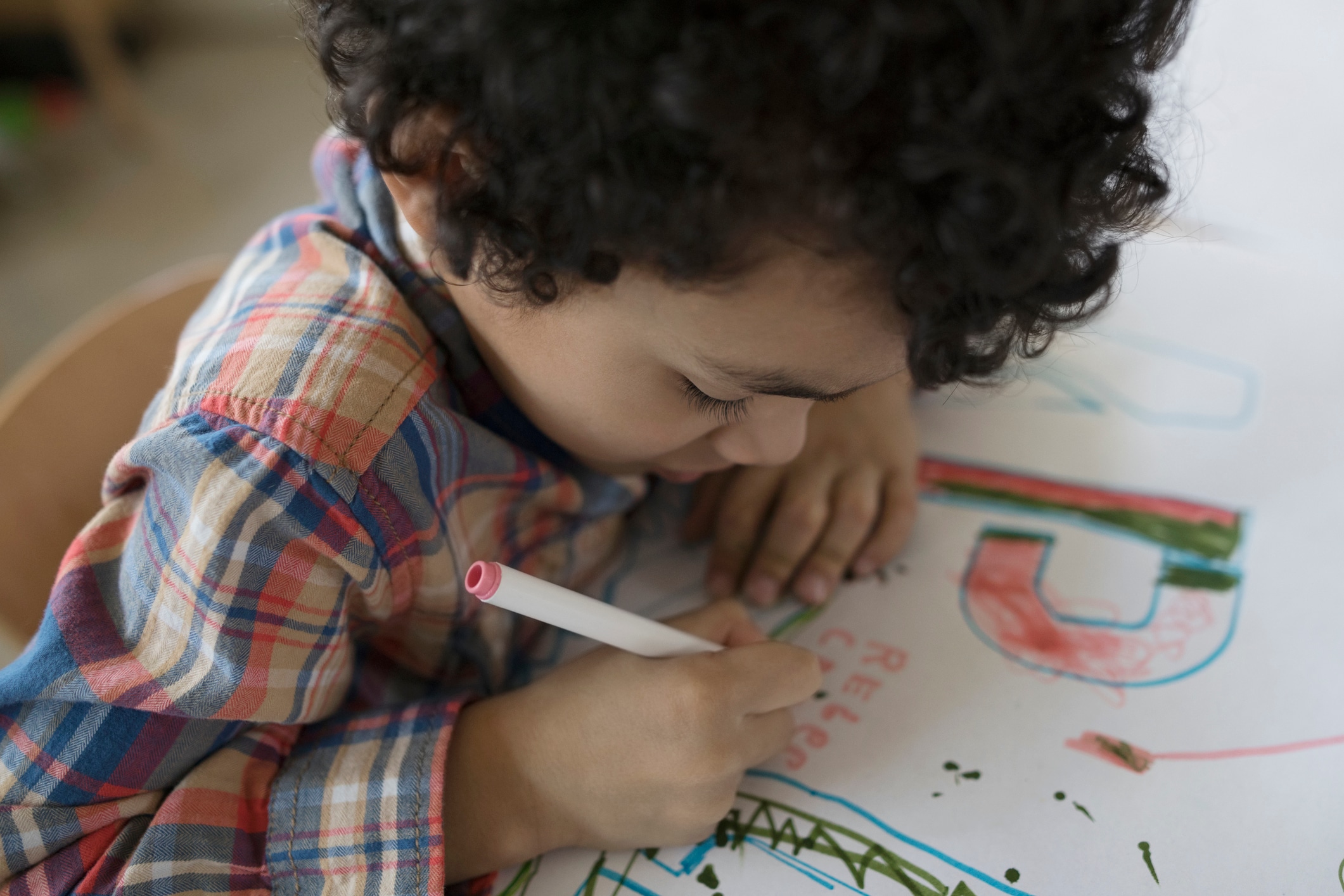It seems like something that should be a pretty cut and dry, but figuring out baby diaper sizes for newborns and toddlers can be trickier than you’d think — particularly if you’re a first-time parent or new caregiver. Just as the case is with baby clothing sizes, when it comes to diapers, there’s no universal guide for how each size will fit each baby. However, there are things to keep in mind when trying to crack the diaper code.
“All diapers sizes and fits can be a little bit different, making things slightly confusing at first or if you’re switching brands,” notes Dr. Jen Trachtenberg, a board-certified pediatrician in New York City. “That being said, the main thing to remember is that diaper sizes are based on the weight and size of the baby, not their age.”
A little confused about how baby diaper sizes work? From signs that it’s too tight to the not-so-fun clue a diaper is too loose, here experts and parents weigh in on how to make sense of diaper sizes.
Diaper size weight chart by brand*
To take some of the guess work out of baby diaper sizes, here’s a quick list of info for six top brands. That said, always be sure to refer to each box individually before buying.
| Huggies | Pampers | Luvs | Honest | Seventh Generation | Amazon Mama Bear | |
| Size | Weight (lbs) | Weight (lbs) | Weight (lbs) | Weight (lbs) | Weight (lbs) | Weight (lbs) |
| Preemie (P) | 1-5 lbs | n/a | n/a | n/a | n/a | n/a |
| Newborn (NB) | 6-9 lbs | Up to 10 lbs | Up to 10 lbs | Up to 10 lbs | Up to 10 lbs | Up to 10 lbs |
| 1 | 8-14 lbs | 8-14 lbs | 8-14 lbs | 8-14 lbs | 8-14 lbs | 8-14 lbs |
| 2 | 12-18 lbs | 12-18 lbs | 12-18 lbs | 12-18 lbs | 12-18 lbs | 12-18 lbs |
| 3 | 16-28 lbs | 16-28 lbs | 16-28 lbs | 16-28 lbs | 16-21 lbs | 16-28 lbs |
| 4 | 22-37 lbs | 22-37 lbs | 22-37 lbs | 22-37 lbs | 20-32 lbs | 22-37 lbs |
| 5 | >27 lbs | >27 lbs | 27+ lbs | 27+ lbs | 27-35 | 27+ lbs |
| 6 | >35 lbs | >35 lbs | 35+ lbs | 35+ lbs | 35+ lbs | 35+ lbs |
| 7 | 41+ lbs | n/a | n/a | n/a | n/a | 41+ lbs |
What size do diapers come in?
Sizes vary among brands, but in general, diaper sizes start off with Preemie or Newborn and go up to a Size 6. Also, keep in mind, brands may have different diaper styles for different sizes and ages. For instance, Pampers has Swaddlers, which are recommended for younger babies, as well as Cruisers, which are geared toward more mobile babies between 6-12 months. The diaper sizes among these different styles is generally the same, but like overnight diapers have extra absorbency for (hopefully) long stretches of sleep, each style is tailored toward a particular stage of babyhood.
How should a diaper fit?
According to Dr. Brandon Smith, assistant professor at the Johns Hopkins School of Medicine in the Department of Pediatrics, there are two measurements parents and caregivers can use when trying to make heads or tails of baby diaper sizes: the size on the box and the size of the baby.
“Each diaper brand may have slightly different sizing than other brands, so it’s important to always refer to the size chart on the package you’re using to ensure proper fit,” explains Smith, adding that, while properly fitting diapers shouldn’t cause any issues for baby, there are telltale signs that a diaper isn’t fitting correctly. “Irritation on the child’s skin, leakage or a portion of the baby’s bottom being exposed in the back are all signs a child may need a different diaper size,” Smith notes.
How do you know when a diaper is too small?
The unfortunate reality is most parents and caregivers wind up realizing baby’s diaper is too tight once it’s too late. While you may not be able to be completely ahead of the game when it comes to sizing up, there are a number of signs that will let you know it’s time to move up to the next diaper size. The biggest tell? Blowouts and leakage. (If you know, you know.)
“We never used overnight diapers, so when my daughters’ crib sheets were wet every morning, I always knew it was time to go up a size,” says mom of two Serena Basciano of Garwood, New Jersey. “I wish I knew beforehand, but unfortunately, diapers that weren’t holding up throughout the night always seemed to be the first sign.”
Other indications baby’s diaper is too tight:
- Diapers are harder to put on. “If you’re having trouble bringing the diaper tabs in on the diaper and you feel like you’re pulling and forcing them in, it’s time to move up a size,” says Smith.
- Skin irritation. “If there are deep red marks on the baby’s thighs or there’s an outline after you take the diaper off, it’s a sign it’s too tight,” notes Trachtenberg. Please note: This is different than diaper rash.
- Current diapers look small. According to both Smith and Trachtenberg, another indication it’s time to move up is if baby’s current diaper size doesn’t fully cover their entire diaper area and they seem extra snug around the belly.
How do you know when a diaper is too big?
In what seems to be a cruel twist of fate, the major (and most frustrating) diaper mishap that indicates it’s time to go up a size in diapers is often the same sign baby needs something smaller: leakage. “Diapers that are too big can also leave you with more stool leaks and blowouts,” says Smith. “You also may see that there’s a lot of room between the diaper and your child’s legs, or that the diaper pulls up way too high above the belly button.”
The good news, though? There’s no need to get rid of diapers that don’t quite fit yet. “Switch them out for a smaller size but hold on to them,” notes Smith. “Children wind up catching up to the next size sooner than parents think.”
When should babies switch from Newborn to Size 1 diapers?
Baby diaper sizes are dictated by a child’s growth as opposed to their age, which makes starting out in Size 1 diapers a possibility for some babies. However, there is a benefit to Newborn (NB) size diapers, if baby fits into them. “The majority of babies start off in Newborn size diapers, which are really convenient since there’s an umbilical cord cut-out,” notes Trachtenberg. “This makes it easier to keep the cord stump dry until it falls off.”
According to Smith, Size 1 diapers are generally for babies who weigh about 10 pounds — which varies in terms of age. “The age for a 10-pound baby is a pretty wide gap,” notes Smith. “A baby could be 2 weeks old or 2 months old.” Trachtenberg adds that, on average, babies typically move up to Size 1 diapers at about 1 month old.





